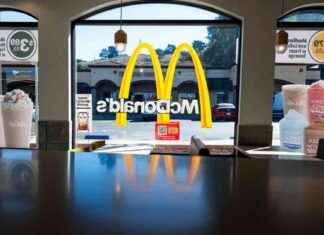Tucked deep within Broomfield-based Ball Corporation, far from its globe-dominating can business, is a small division whose growth has become so compelling that it will almost double the size of its Westminster manufacturing center this year, adding hundreds of jobs in the process.
Strolling through the corridors of this classified facility, Ball Vice President of Tactical Solutions Rob Freedman is greeted by young engineers, carrying prototypes of antennas and other devices, some of which, when realized, will be tucked into the wings of military fighter jets.
In 2016, the engineers and technicians who work here shipped 7,000 custom made parts and devices, most of which can’t be photographed or discussed publicly.
Known for dreaming up, then designing and ultimately manufacturing lenses for navy ship scopes, high-tech, ultra-rugged antennas for fighter jets and various pieces of flight hardware for earth and space, the tactical solutions division has won enough contracts that its backlog now stands at its highest point since Ball Aerospace and Technologies was founded 60 years ago — $1.4 billion.
Tactical solutions is one division of Ball Aerospace and Technologies. Within the Westminster manufacturing facility, Freedman is dwarfed by giant autoclaves and warehouse-like rooms whose ceilings top out at 45 feet, more than five times taller than the average office ceiling. Bright yellow pulleys hang down from those towering ceilings, ready to pick up which ever 10-ton part needs to be lifted and moved.
When the division breaks ground on the expansion in April, it will start a months-long process where the existing 200,000 square foot facility will morph to 345,000 square feet, a 72 percent increase in capacity.
Damon Zuetell is industrial operations manager. His job is to ensure the new space is built quickly and that it keeps hundreds of research and design engineers near the test labs and manufacturing rooms where the devices are imagined and then constructed.
“We like to keep smart people close to what they are building,” he said.
As the division’s backlog has grown — it stood at $700 million a year ago — so have its projects. “Our stuff is getting bigger as we develop higher value, more complex systems,” Freedman said.
Ball Corp. CEO John Hayes told Wall Street analysts last month that the company had decided to expand the Westminster facility.
“It’s a capacity issue,” Hayes said. “We don’t have enough manufacturing space to execute on all the wins we’ve gotten.”
In the years ahead, “hundreds and hundreds” more fighter planes will be made, Hayes said, and Ball Corp. has won contracts to make many of the parts needed for them to be mission-ready.
Chicago-based MorningStar analyst Charles Gross tracks Ball Corp. That the company has opted to invest in a factory expansion is noteworthy, he said.
“In general Ball operates a conservative business and they are cautious about allocating capital,” Gross said. “They want to be confident they will have a high return on that capital before they lay it out.”
Last year, Ball Aerospace, which includes Freedman’s division, generated profits of $88 million, on sales of $818 million, roughly 10 percent more than in 2015, according to the company’s year-end earnings statement.
These earnings are just a small piece of Ball’s overall global business, which generated profits of $224 million on sales of $9.1 billion.
Last year, Ball’s tactical solutions division added 300 workers and this year it plans to add 300 more, according to spokesman William Rigler. That 600 person bump doesn’t include additional hires that will come when the manufacturing center expansion is complete.
When the two years of hiring are combined that constitutes a more than 30 percent jump in Ball’s overall Colorado employment base of 2300.
That is nearly 10 percent of Colorado’s overall aerospace direct employment base of 25,500 people, according to a new industry report by the Metro Denver Economic Development Corporation. When manufacturing sub-sector jobs are counted, the state employs more than 180,000 people in this arena.
That employment base is one of the reasons Colorado ranks no. 2 nationwide for aerospace employment, according to Jay Lindell, who acts as lead on aerospace for the Colorado Office of Economic Development and International Trade.
Ball is the largest “Colorado-grown” aerospace firm, Lindell said, among eight who have major operations here. It is known as a niche player, one that provides specialized parts and equipment to such behemoths as Boeing, Northrup Grumman, Raytheon and Lockheed Martin Corp., among others.
Despite the Trump Administration’s concerns about the cost of Lockheed’s F-35 figher jet, Ball officials and industry experts are taking a wait-and-see approach on what if any effect politics will have on the long-term defense and aerospace budgets.
“It’s too early to tell,” Lindell said.
Back at the manufacturing center in Westminster, Freedman reels off each of the quality honors the center has won in the past five years, with awards in gleaming showcases coming from Boeing, Northrup Grumman, Raytheon and Lockheed Martin, among others.
His division was named one of the top 25 suppliers — out of thousands — for its work on the F-35 and it has won similar awards from the other major U.S. defense manufacturers.
“It’s our 100 percent ‘stick rate,'” Freedman said. “When we go down to the (Lockheed) plant in Texas, and they install our devices on those jets, our’s work. So they never have to be taken off to fix. They like that.”
Jerd Smith: 303-473-1332, smithj@dailycamera.com or twitter.com/jerd_smith
Our editors found this article on this site using Google and regenerated it for our readers.





